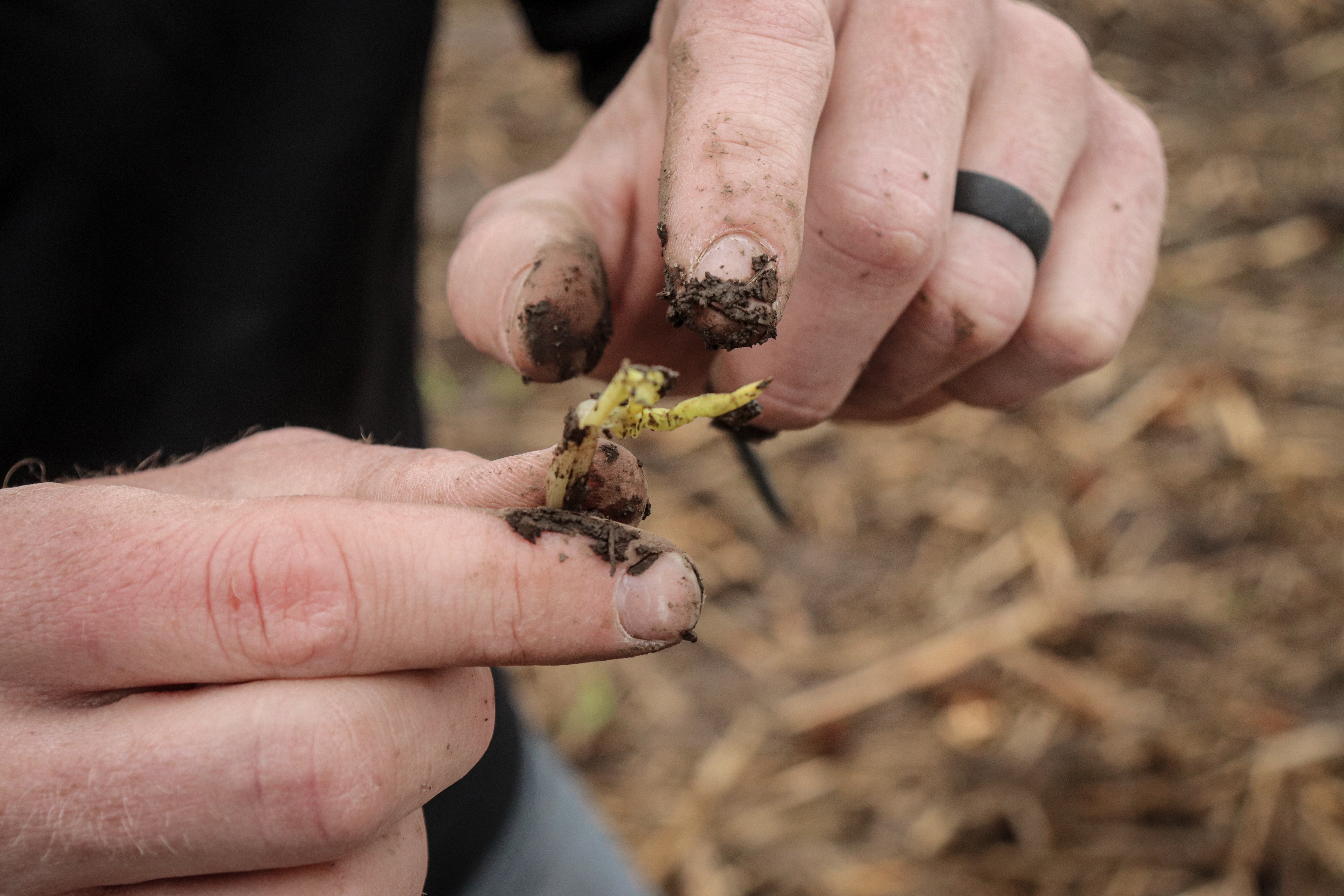AGRONOMICSUPPORT
YOU CAN TAKETO THE FIELD
Adventures from the Corn Belt
Week three of being the LG Seeds Marketing Intern has come to a close, and as I reflect on the shortened week, I had a large growth curve in the agronomy department. I had the opportunity to ride along with Jed Norman, a TTA (Technical Team Agronomist) and travel to northeast Iowa where we looked at a couple of fields.
Now, let me tell you a little story. Growing up, I spent many hours riding around in the feedwagon, carrying feed baskets to our yearling bulls, and sorting market cattle on early Saturday mornings. Naturally, you would think as a farm girl, I would know something about population counts and how to diagnose some minor issues with plants by growing up around corn and soybeans. However, that isn’t quite the case. Much of my time was spent with the cattle, learning how to manage calving cows, fix fence, assist with births, follow vaccination protocols, and many other aspects of the beef industry.
So, when I hopped in a truck and Jed started explaining what we would be doing for the day, I went from about zero to 60 in a matter of seconds. I was introduced concepts that were foreign to me involving terms such as pesticides, various bugs, herbicides, different kinds of weeds, fungicides, seed traits, nutrients seeds need, the hula-hoop method, and frost points.
Immediately, I was saying, “Whoa, Nellie!” There was so much information that it took me a little time and a lot of questions being answered from Jed to start to wrap my brain around the intricate aspects of plant breeding and how to raise a successful crop. Throughout the day, there were three large takeaways.
Seed treatments are great – well, it depends.
When handling corn or soybean seeds, I have always been advised not to handle it with my bare hands – instead, wearing gloves. Me, being the curious gal that I am, started asking Jed about different kinds of seed treatments – there are many! Whether you grow LG Seeds or another brand, a lot of companies have their own seed treatments with various characteristics. Now, there are lots of seed treatments out there – ones against bugs, fungi, and other pests – each comes with their own price tag attached.
Now, you may be curious, which seed treatment is best? Well, that depends. It depends on the field, what pests or bugs you may be fighting, what fungi are most commonly present and essentially, what works best for your operation and what will benefit your crops.
Practice your times tables.
Math is no foreign concept to an agronomist. When standing out in a field it takes a lot of math to calculate what the population is per acre and it has to be a random process (I think I’m beginning to remember a random sampling process from Statistics, maybe?) and you have to make sure that every plant is counted – otherwise you will throw it off by 1,000 plants – no big deal, right?
Although we use 17’5” for a 34,000 population in corn and go straight down a row to start counting, that’s not quite the same process as beans. In beans, we use the hula-hoop method. You may be thinking, “What the heck is she talking about!?” Rest assured – this is an actual process. It’s very simple – you take a hula-hoop, choose a random spot, throw it, count the plants inside of it, multiply it by 1,000 – and boom! You have a count. After repeating this a few times in several other random places in the field, you will have an accurate representation of what your crop will yield in the fall.
The diagnosis is in from the doctor – wait, I mean agronomist.
As I watched Jed analyzing the plants that we pulled up to check for frost damage, I came to a realization: Agronomists are plant doctors. They complete house (field) calls and diagnose our kids (plants). They look at the environment they are in, what the weather has done, analyze if there are any pests or fungi present, and put the puzzle together of why the plants may not be performing as well as they should. They do their best to determine what is wrong, report it to the grower, and determine a plan of action (medication). Sometimes, this calls for a replant, other times it calls for some fungicide or herbicide application. Whatever the case may be, the agronomist is the plant doctor.
Heading into week four holds many new opportunities for learning, and I am certainly excited to see where it goes. Stay tuned for more adventures from the Corn Belt!






LG Seeds Marketing Intern